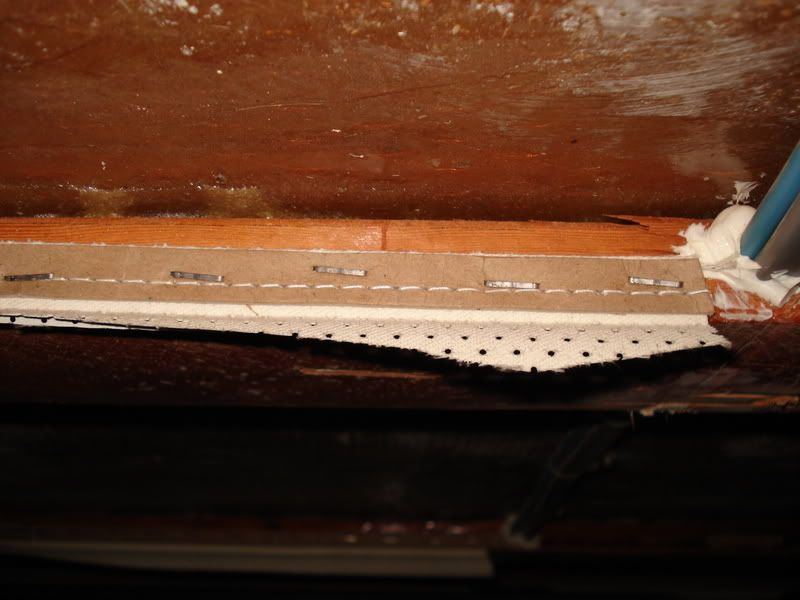We have been so busy as of late down at the marina and boatyard I have not had time to mill a couple of slats I use for photos, but will try and explain the process I use.
Picture a strip of 1/2 plywood ( marine grade of course ) about 1 1/2 inches wide, usually in 8 foot lengths.
One corner is mitered off. Not the end, but the entire strip.......length wise.
So if you lay two strip together, side by side, there will be a "V" showing.
This "V" is facing upward. This is where the headliner is stapled so that there will be a tight fit of the headliner. You can not stick a business card into the seam.
I do not use the cardboard strips, because I do not like the "bump" in the headliner. I do not use solid wood such as pine because it will deteriorate and will not hold the staple very well , especially over time.
I fasten a strip to the existing frame from port to stb. Then cut a length of headliner giving about 10 inches extra per side.
The headliner is usually 54 inches wide. I then grab it in the middle, put a couple staples into the "V", then start stretching and stapling . The stretching is very physical. I work outward to one side, then outward on the other side.
The next panel strip is already in place and I then start with the middle of the headliner that is hanging down and stretch it over the next strip. This takes a lot of pressure. As I staple it, there will be a 45 degree angle of bubble or roll visible in the headliner.
Once stapled, then the ends are stretched and fastened. The excess is cut off and the next panel is started.
I space the panels so they are about 22" wide. This insures a drum tight fit.
Headliner work, to do it right, is not for the novice.
I purchase marine grade vinyl at a local fabric store. It is good stuff, about 20.00 yard, retail, but it does not collect mildew, and it lasts longer than the vast majority of your exterior cushions, including those made and placed on the Hats.
Cheap headliner material is just that. It will mildew faster, loose it stretch retention, and sag within a year or so.
Hats also use the cleat method for headliners, especially the older ones. The problem here when reusing those cleats, is that when the old staples are removed, the cleat ( wood strip ) is usually damaged and when the headliner is stretched during installation, those imperfections in the wood edge will show.
The other reason I do not like the old cleat version is that when the next cleat is fastened, those staples and the material it self causes a wider seam to show.
I will still try and get some photos.


